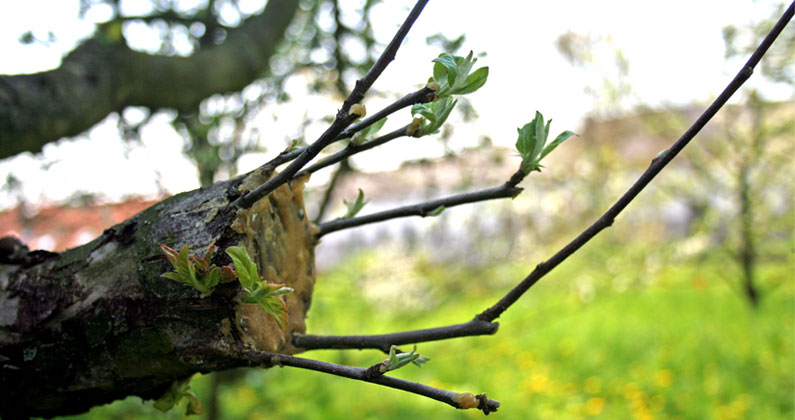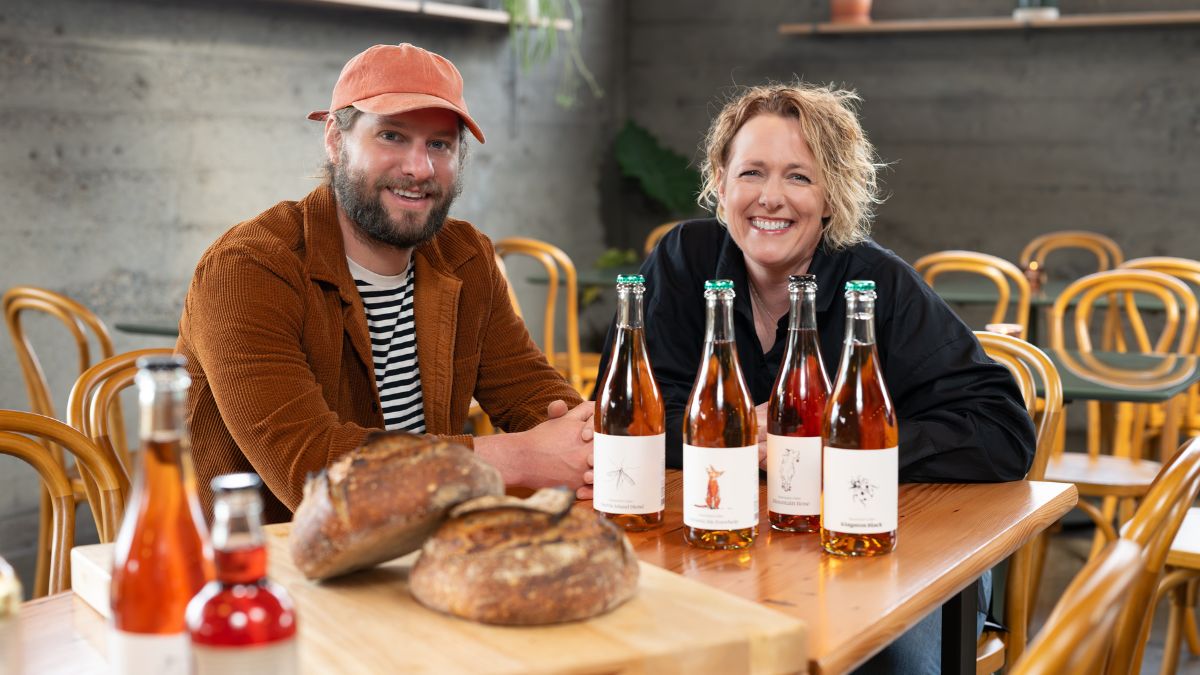Ever wonder how that Granny Smith tree in your yard was planted? It likely wasn’t from a seed. True-to-name apples don’t come through planting seeds, but through grafting. Grafting is the process of joining two plants permanently. There are several processes to grafting, but the desired results are the same. In the most basic sense, it happens by cutting a scion or bud chip of the desired apple tree variety and inserting it into the rootstock of a compatible, parent tree.
Scions are the younger, top part of the extended branch that will produce the fruit of the desired variety. Cut while dormant in the early spring, they are typically ready to graft when the rootstock tree is just beginning to bud. That way, when the scion is inserted, it’s ready to absorb all the necessary nutrients from the budding tree.
A section of existing growth is pruned from the parent tree, leaving a “nurse branch” that will accept the newcomer. The scion is cleanly cut at the bottom and wedged into the rootstock. Growers will then secure the new graft with tape and sealant, protecting it from infection until it heals and grows together.
Why graft? Growers can diversify their production by growing different varieties without having to plant a whole tree. Multiple apple varieties can fit on a single tree.
Secondly, the scions can benefit from the parent tree — obtaining any beneficial characteristics like disease-resistance or hardiness to its environment, while maintaining its own identity. In short, a Honeycrisp scion grafted onto another apple tree will still grow Honeycrisp apples. Grafting also brings new life to injured fruit trees, hindered by little growth and production.
The next time you crack open your favorite cider, or pluck an apple from your tree, toast away to the local growers and cider producers in your life, and throughout the Northwest.






